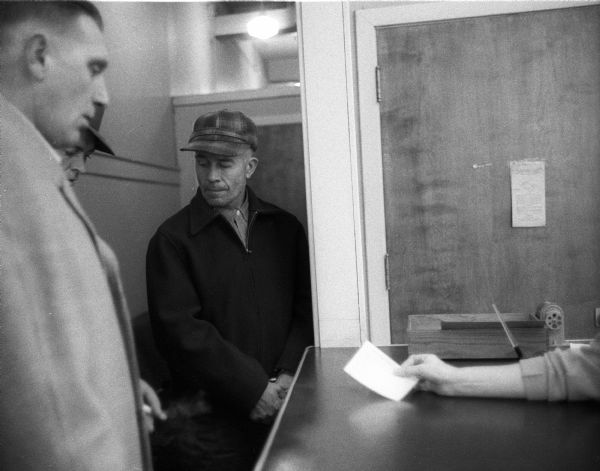The Judge’s Unanswered Question About Did Gein Work Alone…
For decades, the public has accepted a chilling but singular narrative: Ed Gein, the Butcher of Plainfield, acted alone. But the man who presided over his trial—Judge Robert H. Gollmar—left behind a theory that challenges that belief. In his own words, the judge raised a question so disturbing that it remains largely ignored by true crime historians: What if Gein had help?
The Judge’s Own Doubt
In his 1981 book Edward Gein: America’s Most Bizarre Murderer, Judge Robert Gollmar did something unusual for someone in his position—he publicly questioned whether the official version of the case told the whole story.
His concern centered on the 1954 disappearance of tavern keeper Mary Hogan. Three years before the confirmed murder of Bernice Worden, Hogan had vanished from her tavern in nearby Pine Grove. Investigators found blood at the scene and little else—until Gein’s home was searched in 1957. There, Mary Hogan’s remains were found alongside a grisly collection of body parts and objects made from human skin.
But for Judge Gollmar, it wasn’t just the discovery of Hogan’s remains that raised questions—it was the nature of the crime scenes themselves. He wrote:
“The physical evidence clearly established that Mrs. Worden had been dragged out of the store. On the other hand, the blood trail indicated that Mary Hogan had been carried out. Gein was strong but not strong enough to have carried Mary Hogan, a very large woman. Who helped him?”
That observation—that one victim appeared to have been dragged and another carried—haunted the judge. The discrepancy led him to a deeply unsettling hypothesis: someone may have helped Gein commit the Hogan murder.
Dan Chase and the Mystery Man
In the same book, Gollmar relays a secondhand account that only deepens the mystery. A local man named Dan Chase reportedly told the judge that Gein had a friend—someone in the community who had been close to him around the time of Hogan’s disappearance.
According to Chase, this unnamed associate “became violently insane” shortly after Hogan went missing, was committed to a mental institution, and died not long after.
Judge Gollmar wrote:
“Did sudden mental turmoil at the crime and possible cannibalism that he may have witnessed cause his insanity and death?”
The judge stopped short of claiming this man was Gein’s accomplice, but he clearly felt the timing—and the mental collapse—was too coincidental to ignore.
What We Know—and What We Don’t
There is no concrete evidence in police records or investigative files that confirms the existence of this “friend,” or that anyone else was ever charged in connection with Gein’s crimes. All known murders, desecrations, and grave robberies were attributed solely to him.
And while Gein’s home was filled with horrifying trophies, no verified evidence of cannibalism has ever been discovered. Gein himself denied it. Yet Gollmar, with access to all the files and firsthand knowledge of the trial, clearly found the possibility troubling enough to commit to print.
Why Gollmar’s Theory Still Matters
Judge Gollmar was not a journalist chasing headlines. He was the presiding judge in the Ed Gein trial, a man known for his judicial restraint. That he was willing to pose these questions in his published account lends them more weight than a typical rumor or conspiracy theory.
His theory suggests something deeper than simple speculation: that the scope of Gein’s crimes—and his capacity to psychologically affect those around him—may not be fully understood. It also challenges the popular notion of Gein as a lone, disturbed recluse, instead hinting at the possibility that his crimes touched and destroyed others, even if unintentionally.
The Final Question
To this day, no evidence has emerged to confirm that Ed Gein had help. But Gollmar’s question lingers:
“Who helped him?”
Whether that was simply a thought experiment or a veiled reference to something deeper, it remains one of the most chilling footnotes in the already grotesque story of the Butcher of Plainfield.
And it’s a reminder that, sometimes, the most disturbing truths aren’t what we see on the surface—but what those closest to the case were never able to forget.
Author’s Note
This article is based on Judge Robert H. Gollmar’s firsthand writings in Edward Gein: America’s Most Bizarre Murderer. No claims are made beyond what the judge himself documented. No additional witness statements or police records have confirmed the identity or existence of the man Dan Chase referenced. The possibility of Gein having an accomplice remains an open question, not a proven fact.


Leave a Reply